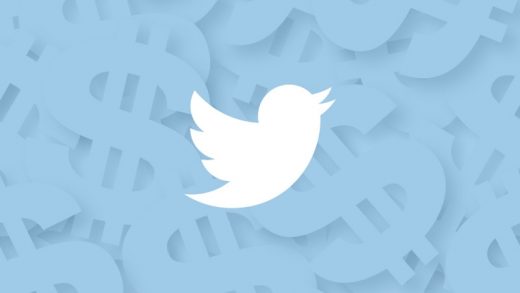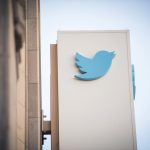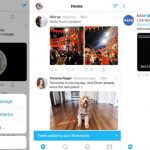Twitter’s ad business has shrunk, but ad buyers say it’s stabilized
Unfavorable competition with Facebook and Google — and the commodification of its own inventory — has led advertisers to slow their spend on Twitter.

For four consecutive quarters, Twitter’s advertising revenue has declined year over year. But Twitter’s ad business isn’t in a free fall so much as it has settled down, according to ad buyers.
“We’re actually seeing modest increases. We’re not seeing pullback. But at the same point in time, there’s not any indication that we’re about to enter a period of hypergrowth. I actually see Twitter having stabilized their presence in the global media landscape,” said Bryan Wiener, executive chairman of 360i.
Executives at DigitasLBi and Mindshare said that some clients have decreased the amount of money spent on Twitter, while others have increased their Twitter budgets, if only slightly.
For some clients, “Twitter used to be part of a test budget, but now they’re not because it hasn’t worked out. For other clients, though, it has increased, but I don’t foresee it increasing more,” said Jeanne Bright, VP and group director for paid social at DigitasLBi.
“Some clients who did decrease budgets, it’s mainly because their budgets in general, not just social, are going down. The ones who have increased budgets are fewer, but most of them are on par with what they were a year ago,” said Beena Kalaiya, head of social for North America at Mindshare.
More competition
Twitter’s ad business suffers under a Goldilocks paradox. Twitter has a big audience, but not a big enough one. It’s a good place for brand advertisers to get people’s attention, but not all the time. It has strengths in direct-response advertising, but they’re obscured by its direct-response struggles. The real-time nature of its product separates it from other social platforms like Facebook, but it also leads advertisers to lump it in with news publishers instead of social platforms (a categorization even Twitter has acknowledged). As a result, Twitter remains able to compete for a share of advertisers’ budgets, but it’s not able to win as much share as it might have previously.
“Clients are looking for simplicity and plans that are executable at scale and, in some cases, across fewer partners. That’s why Facebook and Google continue to dominate. Twitter isn’t going to be right for everybody and doesn’t have the scale to compete. That’s why it’s included [in a media buy] sometimes but not all the time,” said Noah Mallin, head of content at Wavemaker.
“Clients have gotten a more complete picture of where Twitter does well, which is in event-based activations, real-time-esque marketing, and where Twitter has not done as well. Direct-response hasn’t been as successful. If [a brand is] not heavily invested in video, they haven’t seen Twitter to be very successful. And then ultimately Twitter’s targeting isn’t as good as what you might expect it to be. So in a situation with limited marketing dollars, they’re just not going to be prioritizing Twitter over other partners,” said Bright.
More commodification
Twitter has never been a more vital conduit for information — authentic and otherwise — yet it’s struggled to be proportionally vital to advertisers. Twitter executives have acknowledged the company’s lowered demand among advertisers. “We have some inventory that’s not being sold,” Twitter COO Anthony Noto said during the company’s most recent earnings call in October.
Twitter has fallen victim to the Facebook-Google duopoly, like other digital publishers. Not helping Twitter is the fact that its ad business too often resembles seemingly every other digital publisher’s, to the point that Twitter is even preparing to sell its inventory alongside other publishers’.
Twitter has struck a partnership with demand-side platform The Trade Desk to allow advertisers to programmatically buy ads on Twitter in a pool with inventory from other publishers, according to ad buyers. Noto discussed the possibility in October but did not say any deals had been made or offer details. However, ad buyers said that, through The Trade Desk, Twitter will sell in-stream and in-feed video ads, as well as static image ads that can contain a link and may more closely resemble a banner ad than a Promoted Tweet. A Twitter spokesperson declined to comment.
“It does commodify Twitter,” said Mallin. In the near term, programmatically pooling its inventory would make it easier for brands to buy Twitter’s inventory and could enable Twitter to fill its unsold ad space, and the increased volume could offset the lower prices brands would likely pay for the programmatically sold inventory. “But I’m not sure it’s the best thing in the long term,” he said.
Video, a glaring bright spot
Perhaps nothing better illustrates Twitter’s advertising dilemma than its video ad business.
To spur advertiser demand, Twitter has bent over backward to cater to advertisers’ growing demand for video. It has signed deals with media companies, like BuzzFeed and Cheddar, to produce live shows. It has rolled out a YouTube-style monetization program that attaches ads to the videos that certain publishers and creators post to Twitter in exchange for a cut of the revenue. And most recently, it has the deal to sell its video inventory programmatically alongside other publishers’ video inventory.
Twitter’s pivot to video appears to be working. Video has become the company’s most popular ad format. Across the board, the agency execs interviewed for this article cited Twitter’s video ads as a bright spot for the company. Because it’s easy for clients to extend a pre-roll campaign to Twitter “just to add scale to a larger program,” many are, said Mallin. Likewise, the amount of money that Mindshare’s clients are spending on Twitter’s pre-roll ads has increased year over year, said Kalaiya.
However, there’s a dark side to video’s rise. While video is often considered a pricey ad format, it is actually cheapening Twitter’s inventory. For eight straight quarters, the average amount of money that Twitter receives per ad sold has declined year over year. That streak dates back to around the time that Twitter adopted autoplay video ads, and Twitter regularly cites video’s higher share of ad impressions for the continued pricing decline. Of course, Twitter’s hope is that its video inventory will eventually be in such demand that advertisers will be compelled to pay more in order to access it. But that is far from guaranteed.
Consider Twitter’s top-shelf video ad offering: its premium live broadcasts. Brands have “seen great success” running against these shows or sponsoring them outright, said Bright. However, these spots “come with a hefty price tag,” she said, and as a result, clients are unlikely to do more than one of these deals a year.
On the other end of the spectrum is Twitter’s pre-roll business. That business has succeeded because it’s commonplace. A brand that has produced an ad to run on TV, YouTube or any number of other places can just as easily add Twitter to the mix. It’s “turnkey,” said Mallin. But that turnkey nature means it’s just as easy to turn on Twitter as to turn it off in order to free up that money to be spent somewhere else. And soon, that somewhere else may be Facebook, which plans to test running pre-roll ads on its Watch tab.
If Facebook officially adopts pre-roll advertising, Twitter would once again find itself having to compete against the company that in many respects has been sitting on its ad business’s chest ever since it first tried to get off the ground.
Diminished direct-response business
Twitter hasn’t thrown in the towel on its direct-response advertising business, but it sure has been on the ropes for a while, seemingly ever since the company first began fighting for direct-response dollars.
In the first quarter of 2015, Twitter’s “revenue growth fell slightly short of our expectations due to lower-than-expected contribution from some of our newer direct response products,” said then-CEO Dick Costolo in the company’s earnings release for the period.
More than 2 1/2 years later, Twitter’s direct-response advertising business continues to struggle, though Twitter may be as much to blame as unfavorable comparisons to its competition.
“They have kind of pulled out. They were really focused on [direct-response advertising] and then backed off in the last year or two,” said Wiener.
“There’s still some room for direct-response [ads], but look at where Twitter has expanded inventory. It’s places that are more video-oriented. I wouldn’t say they are pushing hard on direct-response,” said Mallin.
Indeed, the direct-response side of Twitter’s ad portfolio has shrunk. Last year, the company said that it would discontinue its lead-generation ad format. And earlier this year, Twitter announced that it was shutting down TellApart, the retargeting platform it bought for $479 million in 2015 to undergird its direct-response efforts.
To be fair, Twitter still endeavors to stand up a direct-response advertising business. It operates a little-known program called Global Ad Performance (GAP), in which a team of direct-response experts from Twitter works directly with brands and agencies to set up and optimize their direct-response campaigns for the platform. “For clients that are willing to test into it, it’s actually performed decently well. But I would say that it takes a bit of sell-in [to convince clients to participate],” said Bright.
It’s much easier for brands to buy the idea that Twitter’s direct-response struggles persist and that the platform is best suited to brand advertising.
“Looking at 2016 to 2017, what’s really changed is Twitter for DR. In 2016, we were using Twitter a lot for direct-response, and we’ve really shifted to brand advertising campaigns. Video obviously being a big brand driver,” said Gila Wilensky, VP of media activation for North America at Essence.
Also hampering the direct-response side of Twitter’s ad business is the fact that Twitter’s ad-targeting capabilities still fall short.
For example, advertisers are increasingly gravitating toward CRM-based targeting. The ability to match a customer from a brand’s database with their account on a platform like Twitter makes for more accurate targeting; it can also be used to pinpoint people who are not yet customers of a brand but share characteristics with existing customers and are therefore more likely to become customers. As a result, everyone from Twitter to Facebook to Google to Pinterest to Snapchat to LinkedIn offers some form of CRM-based targeting. But while Facebook is typically able to match 80 percent or more of a brand’s customers to a Facebook account, Twitter’s match rate ranges between 15 and 55 percent, according to Kalaiya.
“They always are going to be working with less granularity than Facebook, for instance, because they don’t have the structured data that Facebook was able to get from users,” Mallin said.
Twitter’s underutilized edge
Twitter does have an edge that differentiates it from its rivals. But it could do a better job of capitalizing on it.
“Twitter is a platform that is really strong in immediacy, in capturing moments, in spurring action on a real-time basis,” said Wiener.
The real-time nature of Twitter is its proverbial moat. As Mallin said, “Twitter still owns real-time conversation in a way that other platforms don’t.” But as much as that moat may protect Twitter’s business, it sometimes serves as a barrier to brands.
When news breaks, it often breaks on Twitter. Then it spreads, overtaking people’s timelines. This swift dissemination of information makes Twitter more vital now than it ever has been. That creates more opportunities for brands to participate but also causes them to be more selective of when to participate.
“The temporal nature of Twitter has been both its strength and weakness. If a brand is talking about one thing and the rest of the world is talking about another thing, the brand can seem tone-deaf or, even worse, insensitive,” said Deep Focus CEO Ken Kraemer.
Instead of running evergreen, always-on campaigns that require a responsible marketer to monitor Twitter minute-to-minute in case something happens that would justify pausing the campaign, brands are turning toward “more so those brand moments, those tentpole moments,” said Wilensky.
This gravitation toward event-based advertising on Twitter isn’t only a function of brands eyeing a safe harbor. It’s also a matter of efficiency. The more downward pressure on advertisers’ budgets, the more advertisers are pressed to be more discreet in how they spend their dollars. As much as that may hurt Twitter’s business, it should also help it.
Keyword targeting may hold the key
“If brands use [Twitter] like they use Facebook, it isn’t going to work. Twitter is very real-time. You have to be relevant. Your content has to be relevant. How you target has to be different,” said Kalaiya. On Facebook, brands target what people are interested in. On Google, brands target what they are searching for. On Twitter, brands target what people are talking about, she said.
Through its keyword targeting option, Twitter lets brands aim their ads based on what people are saying. Keyword targeting is Twitter’s “most effective” form of targeting, driving better results for performance-minded marketers than interest-based targeting, “because we are targeting how people talk,” said Kalaiya. And Twitter’s negative keyword targeting option enables brands to avoid any trending or touchy topics they don’t want to be associated with.
As with seemingly all things Twitter, keyword targeting isn’t without its drawbacks. Ads targeted by keyword are only shown to people who include the specified keyword(s) in a tweet or search query on Twitter. That’s fine but limiting. Twitter could stand to win over more marketers if it were to at least include keywords in the tweets that a person retweets or likes or that contain a photo, video or link that the person interacts with.
Twitter should tout its keyword targeting in the same way Facebook boasts its interest targeting or Google its intent targeting. It could even position it as “conversation-based marketing” in the same way that Facebook has pushed “people-based marketing.”
In an attempt to stem its ad-revenue slide, Twitter has been making it easier for advertisers to treat its inventory like any other media company’s. But to sustain any revenue reversal, it may have to do the opposite.
“There’s very few brands that I know of — and I’m talking very generally here — that understand the purpose of Twitter and how best to leverage it,” said Kalaiya.
Marketing Land – Internet Marketing News, Strategies & Tips
(25)















